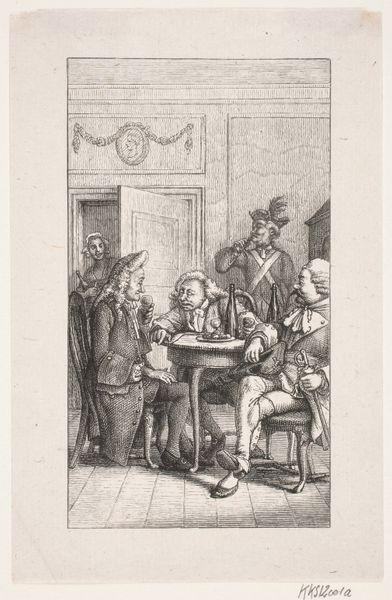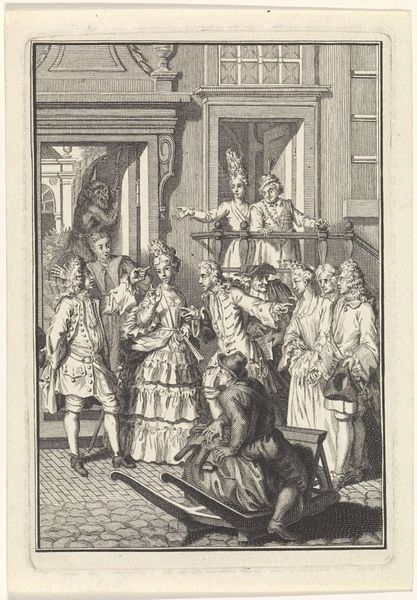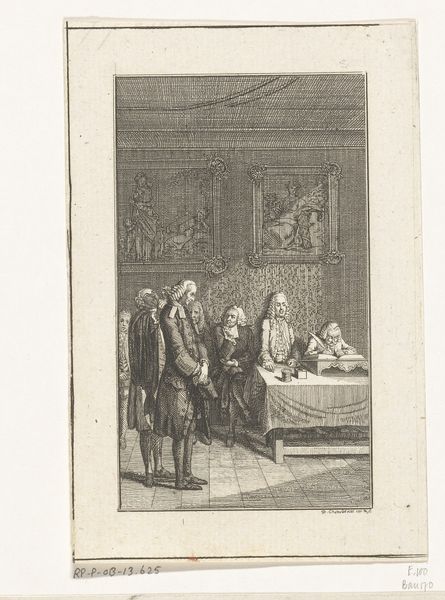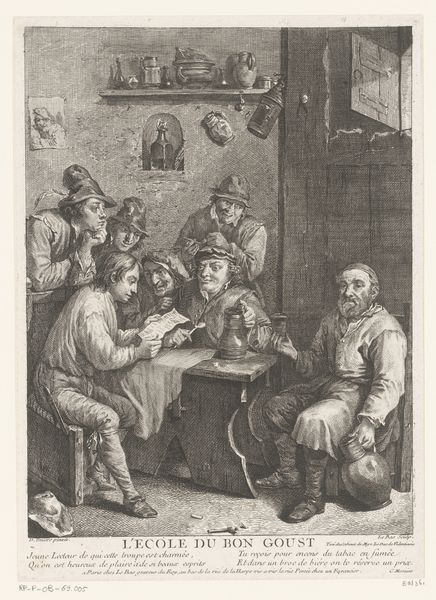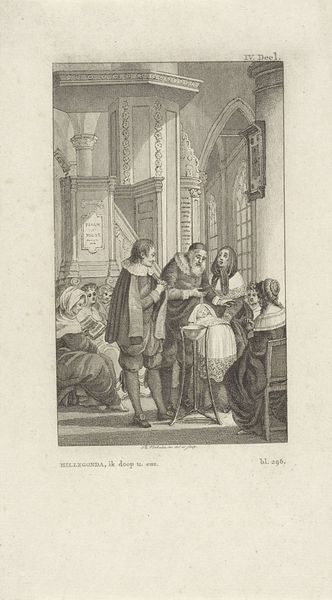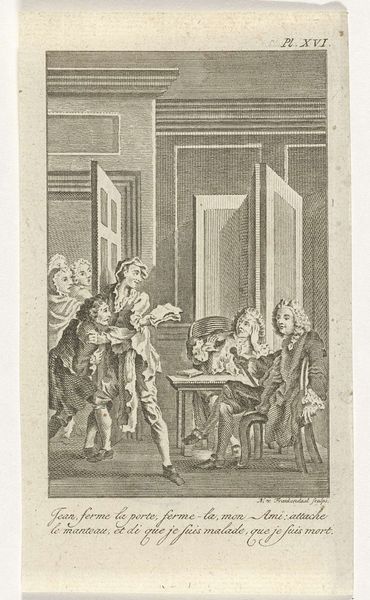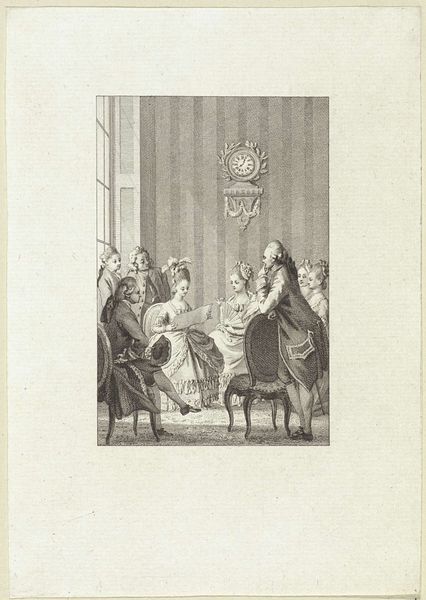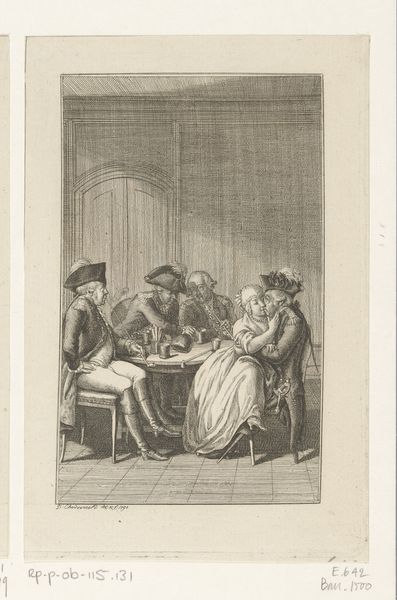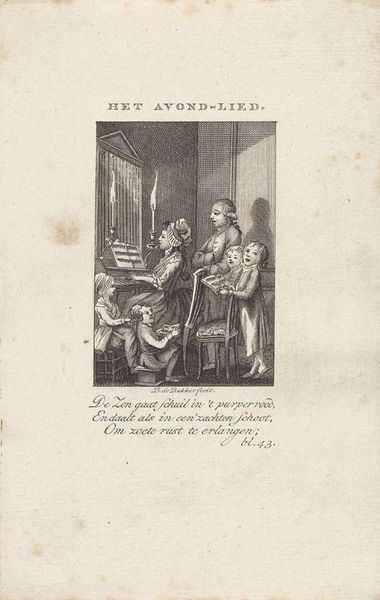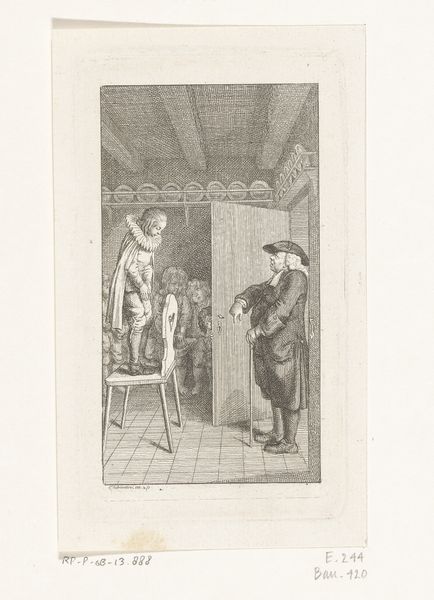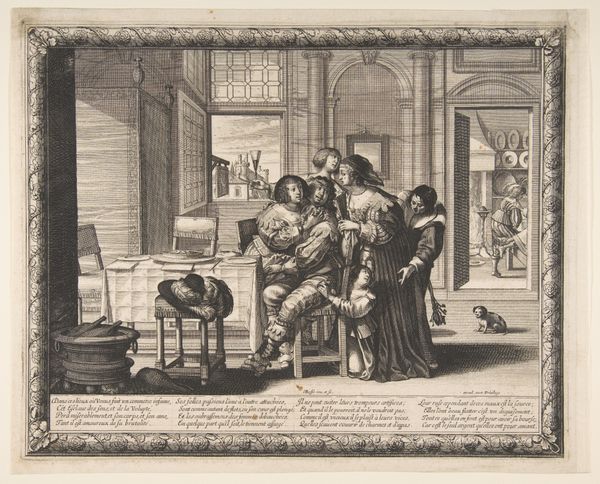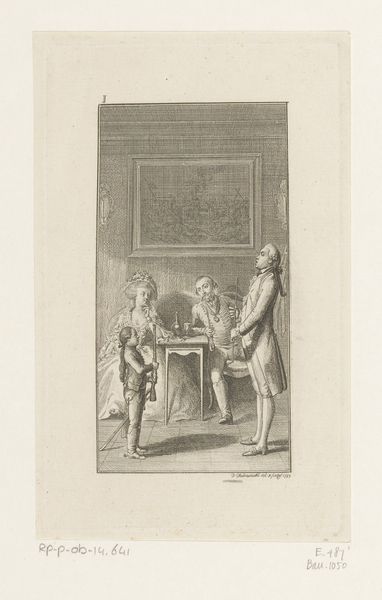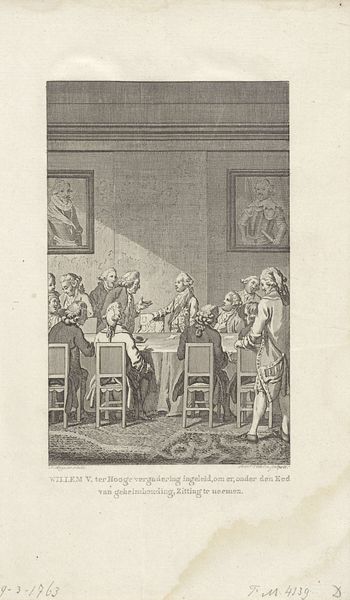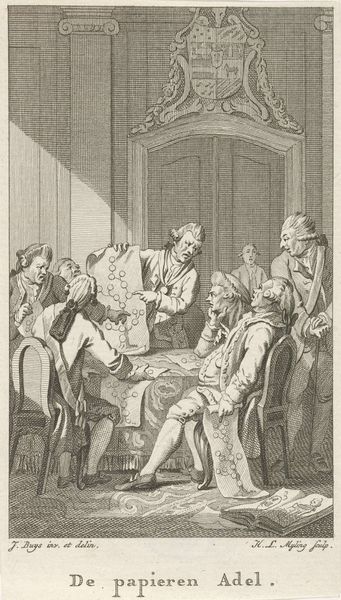
drawing, print, woodcut
#
portrait
#
drawing
# print
#
woodcut
#
genre-painting
#
history-painting
Dimensions: 175 mm (height) x 109 mm (width) (bladmaal)
Curator: This is "Holberg, Barselstuen, IV, 4" by Johan Frederik Rosenstand, created sometime between 1820 and 1887. It’s a print, specifically a woodcut, held here at the SMK. Editor: My first impression is one of subdued celebration, or perhaps skeptical camaraderie. The palette is constrained, of course, but the body language of the figures feels almost… argumentative, while still being intimate. Curator: Intimate, but under what conditions? Rosenstand has captured a scene from Ludvig Holberg's play, “Barselstuen.” Look closely; it represents the fourth scene of the fourth act. The engraving highlights patriarchal structures and societal expectations surrounding childbirth and lineage. The text beneath even quotes the play "Jens Olsen: De Ager i Væn, at din Kone er iffe Haber til Barnet.". It's a satire, of course. Editor: The symbolic weight of the objects on the table feels intentional. The bottle of wine, the gathered figures, and the doorway in the background with another woman present; these aren’t merely illustrative details. They communicate aspects of gendered power dynamics. Is it correct to assume this a gathering after a birth of a child in the family? Curator: Absolutely. The image lays bare the societal pressures placed on women regarding childbirth and male lineage. It reveals the way women were often treated as vessels, their value judged primarily by their ability to produce male heirs, revealing deep seated anxieties. The figures, caught between celebration and critique, expose how such beliefs were normalised and upheld. Editor: Note how Rosenstand utilises a theatrical composition: The open doorway to one side acts like another window into the domestic, familial life that's usually obscured from an outside patriarchal perspective. The flute player off to the side adds this tension of almost a twisted celebratory song within. I find that such choices emphasize a deeper reflection. Curator: And how the seated figures dominate the frame, excluding those on the periphery, denying entry. Rosenstand subtly critiques the way in which narratives are crafted and maintained by those in positions of privilege. What appear to be harmless gestures of celebration serve to mask systemic power imbalances, highlighting just how insidious they can be. Editor: Seeing these historic contexts provides insight into how symbols evolve and are reinterpreted, reminding us that certain patriarchal constructs continue to impact present day perceptions. A scene with some very long lasting resonances, indeed. Curator: Yes, exactly! It invites dialogue and introspection concerning identity and how history affects who we are and can still impact society today.
Comments
No comments
Be the first to comment and join the conversation on the ultimate creative platform.
